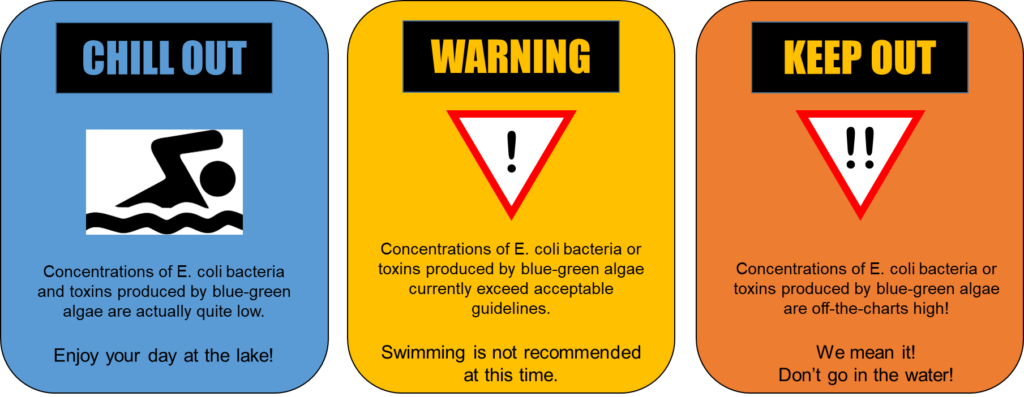
There is poop in Iowa’s lakes and rivers! I’m sure you know this by now. The Iowa DNR monitors bacteria at 39 beaches every week and posts a “swimming not recommended” sign if the average for the month exceeds 126 E. coli/100mL. If a lake has a history of problems, another threshold (235 E. coli/100mL in a single sample) is used as an early warning system. As Iowa Environmental Council has reported, Iowa DNR issued 134 of these beach advisories last summer. Streams are monitored less often, but we can use the same thresholds to evaluate average conditions at the end of the season. Last year, all 15 streams that we monitor in Story County had E. coli levels above the primary contact recreation standard.

Okay, but what do we do with that information?!
I know some people who are so grossed out they won’t dip their toes in any lake or river in Iowa, even if the DNR says it’s okay. I know some other people who went ahead with a canoe trip on the Des Moines River, despite reports that just two days before, a broken sewer main in Fort Dodge had released 400,000 gallons of raw sewage into the river upstream of their route. They’ve paddled polluted waters before and figured it was no worse than usual.
Part of the difficulty is that some people translate “an unacceptably high number of beach advisories” to “lots of poop in the water everywhere all the time.” That’s not what’s happening. If you picked a summer weekend and a state park at random, and took your family to the beach, you would have had a 77% chance of swimming in water that met the primary contact recreation standard. If you subscribe to IEC’s Water Watch newsletter, you can make sure you pick the right one!
Part of the difficulty is that Iowa relies heavily on just one threshold to issue alerts and place waters on the Impaired List. Some other states have started used a red/yellow/green warning system that distinguishes between “swimming not recommended” at 235 E. coli/100mL and “beach closed” at 1000 E. coli/100mL. This is helpful if you’re a little more tolerant of risk or are doing activities that will keep your head above water. That upper limit is the same as the one used during the 2024 Summer Olympics to determine whether to hold swimming events in the River Seine.

You may recall that Paris spent $1.5 billion to clean up the Seine River in time for the 2024 Summer Olympics and still had to postpone some events because of poor water quality. Similarly, Story County Conservation has spent $3.4 million to restore Hickory Grove Lake and still had to post beach advisories four weeks last summer. There is no easy fix for these problems. However, a long-term perspective on water quality in the Seine shows how an open sewer can become a swimmable river (at least most of the time) with improvements in wastewater treatment. Yes, Iowa has more livestock than people, but I’ve been seeing some evidence that points to humans as the main source of feces and pathogens in many of Iowa’s waterways. If that’s true, then our water quality could benefit from projects to replace combined sewer systems (we still have a few), add liners to rusty sanitary sewers, get septic systems up to code, and make some overdue upgrades to sewage treatment plants.
Randy Evans was on the right track when he compared water quality in Iowa to water quality in Paris, but he only looked at one day. I’ve gone a few steps further. In the attached table, I’ve shown the best, worst, and average E. coli readings measured last year at some of Iowa’s most popular beaches and water trails. Below, I’ve put them in broad categories, benchmarked to some examples from France. I’ve also included some sites we monitor in Story County, in bold. Get ready to calibrate your disgust!
How do we measure poop in the water?
Escherichia coli is a species of bacteria found in the guts of birds and mammals. Some strains are harmless and some can put you in the hospital. It’s an easy-to-measure proxy for feces in the water, which could carry a wide variety of disease-causing microbes. E. coli can be measured directly by counting dots in a Petri dish (Colony Forming Units, CFU/100mL) or indirectly using a chemical reaction (Most Probable Number, MPN/100mL) but the results are similar enough that these units are often used interchangeably.
Typical laboratory protocols have a lower detection limit of 10 and an upper quantification limit around 24,000. With such a big range, E. coli data has to be plotted on a log scale and averages have to be expressed as a geometric mean or median—basically, worry less about the exact number and more about the number of digits.
1 digit: As clean as it gets without chlorine
- Too low to detect, with typical methods (reported as <10)
- A typical beach day at Peterson Park
- A typical beach day at Lake Rathbun, Gray’s Lake, or Lake Okoboji
- A good day at most lakes on the impaired list
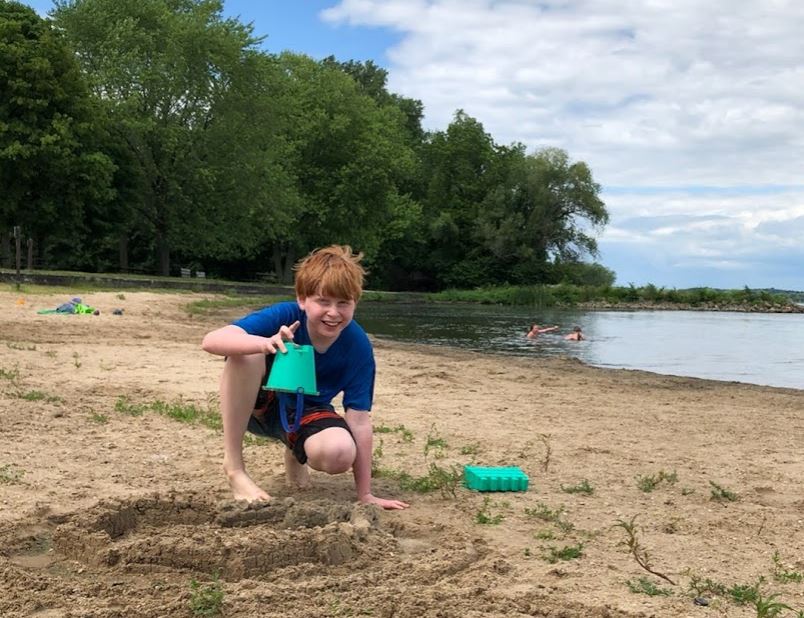
2 digits: Have fun in the water!
- Meets Iowa’s primary contact recreation standard (geomean <=126, single sample <=235)
- A typical day at a French stream running through forest or cropland
- Treated effluent from Iowa sewage treatment plants with UV disinfection
- A typical beach day at Hickory Grove Lake
- A typical beach day at Lake MacBride (Iowa City) or Big Creek
- A bad beach day at Peterson Park
- A bad beach day at Lake Okoboji
- A typical day at the Charles City or Manchester whitewater parks
- A good day at most rivers on the impaired waters list

Low 3 digits: Swim at your own risk (families)
- May exceed IA primary contact recreation standard (geomean >126, single sample >235)
- A typical day at a French stream running through pasture
- The Seine River in Paris during the women’s marathon swim
- A typical beach day at Clear Lake or Lake Darling
- A bad beach day at Lake Rathbun
- A bad day at the Charles City whitewater park
- A typical day on the S. Skunk River water trail
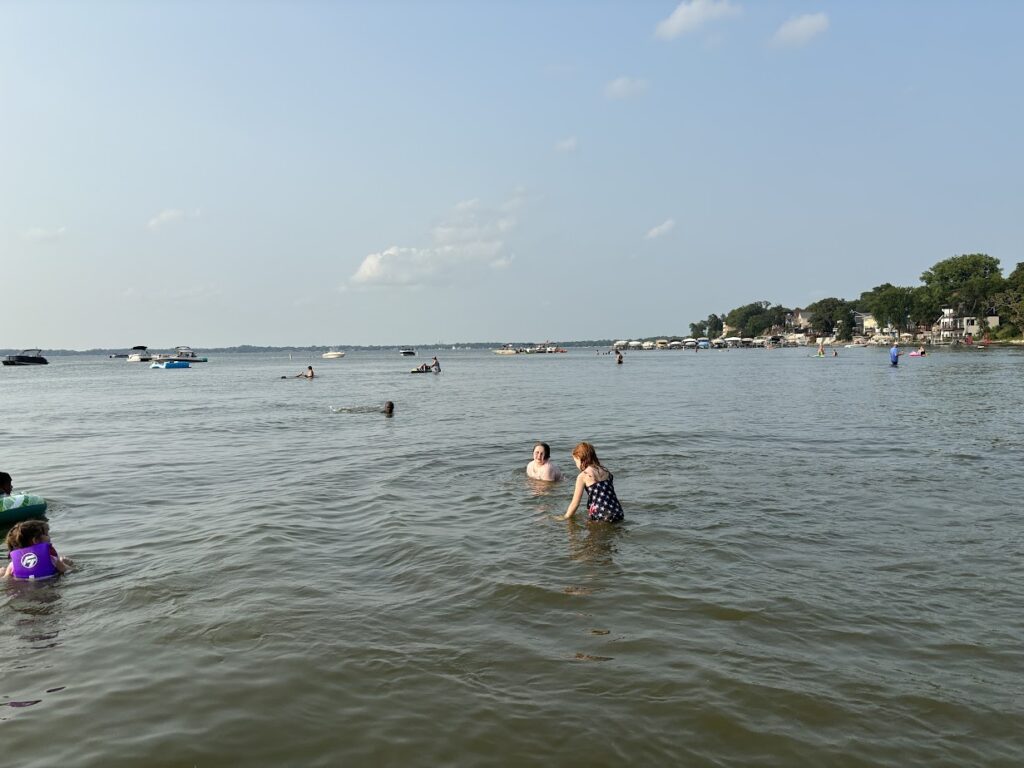
High 3 digits: Swim at your own risk (athletes), canoe at your own risk (families)
- May exceed Iowa’s secondary contact recreation standard (geomean > 630, single sample >2,880)
- The Seine River in Paris during the men and women’s triathlon
- A typical day at Ioway Creek in Ames
- A typical day on the lower Maquoketa River (near Spragueville)
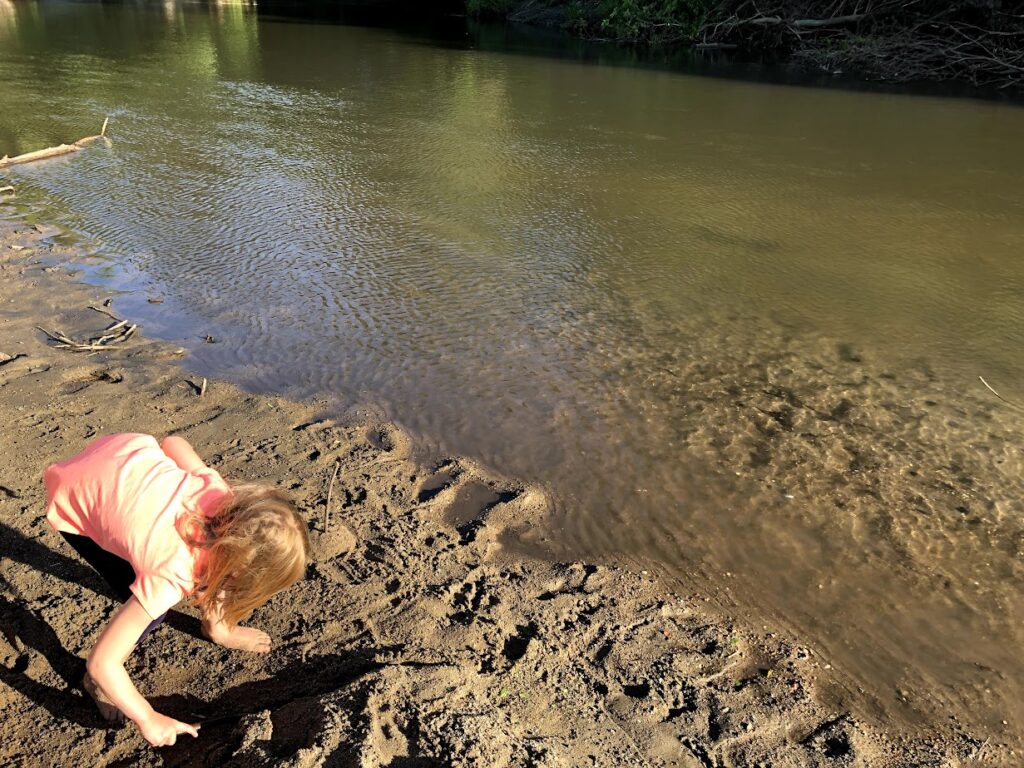
4 digits: No swimming, canoe at your own risk (experienced paddlers)
- Action limit for beach closures in some states (single sample > 1000)
- A bad day for the Seine at the 2024 Olympics; men’s triathlon postponed
- A typical day for the Seine in the early 2000s (since improved sewage treatment, but before sewer system improvements)
- Treated effluent from modern Paris sewage treatment plants
- A bad beach day at Gray’s Lake, Lake MacBride, Big Creek, Clear Lake, or Lake Darling
- A typical day at West Indian Creek, downstream of an outdated sewage treatment plant
- A bad day on the Skunk River or Ioway Creek (1.5 inch rain previous night)
- A bad day at the Manchester whitewater park
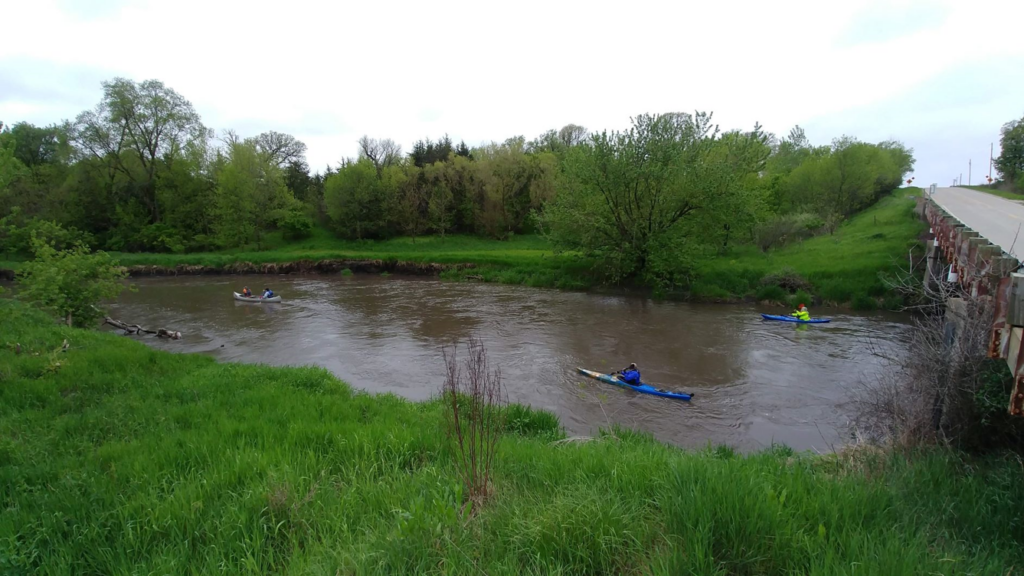
5-6 digits: Stay out of the water
- May be too numerous to count, with typical methods (reported as > 24,000)
- A typical day for the Seine in the 1980s, before modern sewage treatment
- A bad day on the Seine River in 2008, before attempts to control combined sewer overflows
- Treated effluent from outdated Iowa sewage treatment plants (Osceola, Nevada, Knoxville, LaPorte City)
- A bad day at West Indian Creek (1.5 inch rain previous night), downstream of an outdated sewage treatment plant
- Flash flooding in the Skunk River or Ioway Creek (June 2022). No one should be in the water during these conditions.
- Two bad days on the lower Maquoketa River (near Spragueville), during high water levels
- A bad day at Hickory Grove beach. Previous studies have shown that the main source of the bacteria is geese and dogs at the beach.

This should make it safer for kids in Maxwell to play in Indian Creek.
7-8 digits: Raw sewage or manure
- Untreated wastewater entering Parisian sewage treatment plants
- Combined sewer overflow in Paris
- Hog manure spill in creek near Bloomfield, 2021
- Cracked sanitary sewer in Ames leaking into Ioway Creek, September 2009
No picture for this one. You’re welcome!
What is the risk of poop in the water?
Recreational water quality standards are based on epidemiological studies at swimming beaches. Researchers have found that swimmers were more likely than non-swimmers to get sick with gastroenteritis (“stomach flu”) and that illness rates were higher at beaches with more fecal indicator bacteria. Symptoms can range from mild to dangerous and are often falsely attributed to food poisoning. The EPA recommended a threshold of 126 E. coli/100mL to keep the risk of illness below a certain level for swimming, water skiing, children’s play, and other “primary contact” activities, but you should think of it as a point on a continuum rather than sharp break between “safe” and “unsafe.” Secondary contact recreation standards are used less often and involve some adjustment factors.
There are many factors that can influence whether you get sick while at the beach—how much water you swallow or get on your face, whether the source of the feces is human or animal, your general health, and previous exposure to the pathogens. There are also some challenges in accurately quantifying E. coli levels in water, which can vary a lot even within the same body of water and over a short period of time. I ran across a randomized control trial from Germany that controlled for all these factors. Some 2000 people were recruited to spend an afternoon at one of four locations (3 lakes and 1 river). Half stayed on shore and half were asked to spend ten minutes in the water, dunk their head at least three times, and report if they accidentally swallowed water. Water samples were collected every 20 minutes from the center of the swimming area and tested for E. coli. Researchers tracked how many people got sick over the next week with symptoms of a waterborne illness. Here are the results.
| Water quality (E. coli/100mL), by quartile | Incidence rate of gastroenteritis |
| Control group | 2.8% |
| 0 to 72 | 1.9% |
| 72 to 181 | 5.2% |
| 181 to 379 | 6.6% |
| 379 to 4,600 | 8.2% |
What about really polluted water? An academic review board would never approve an experiment to send 931 people into a bay polluted by a combined sewer overflow, but triathletes are crazy enough to do it for fun, so the scientists followed up with the athletes. After swimming 3.8 km in water with an estimated 15,000 E. coli/100mL, 42% of them got sick with Campylobacter, Giardia, or E. coli!
There you have it, these are ballpark, intuitive judgements about when to go in the water and when to stay out, but they are informed by good science. Oops, did I just give health and safety advice without running it by anyone?
Prairie Rivers of Iowa is not a medical professional and our work is not conducted under a DNR-approved quality assurance plan, please consult your doctor and refer to section 567-61.3(3) of the Iowa Code, terms and conditions apply.
Bottom line, you may disagree with the interpretation I’ve outlined here, but there’s clearly a lot of wiggle room to enjoy Iowa’s waters without taking unnecessary risks with your health.
